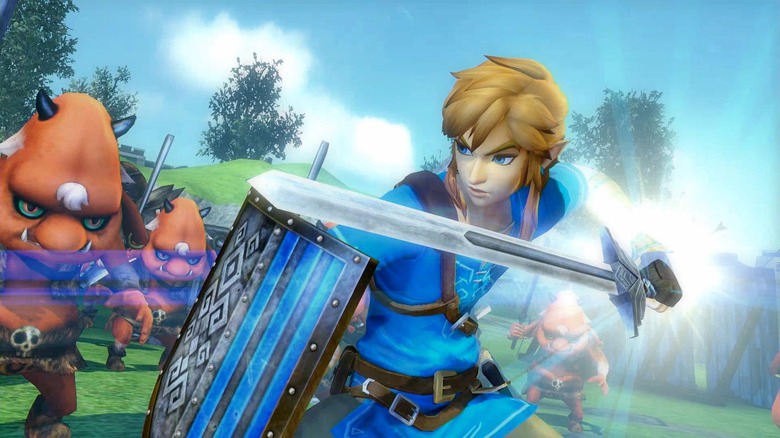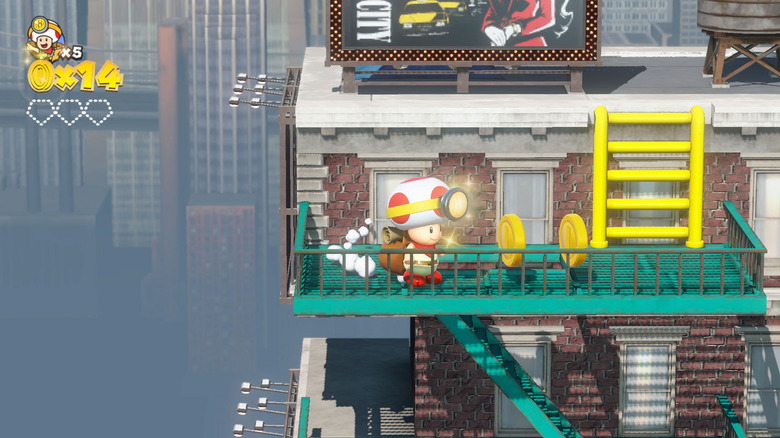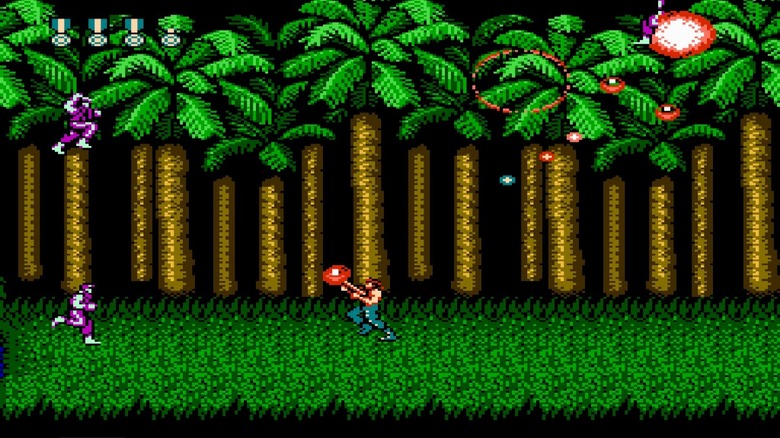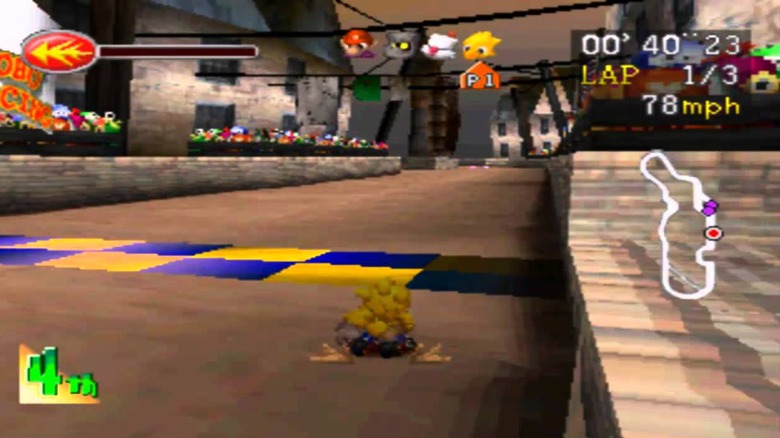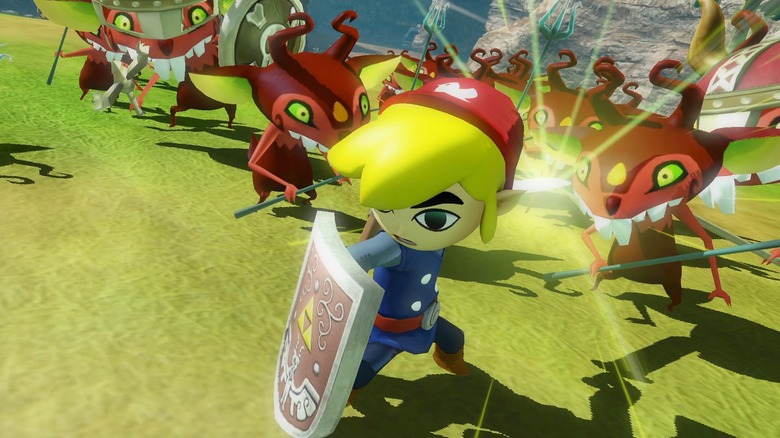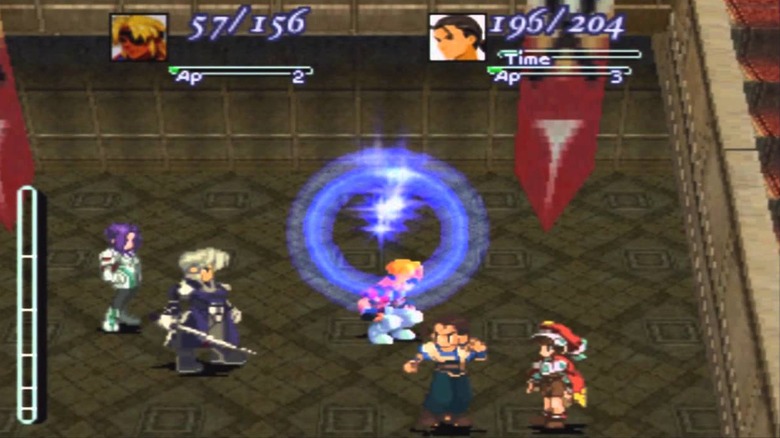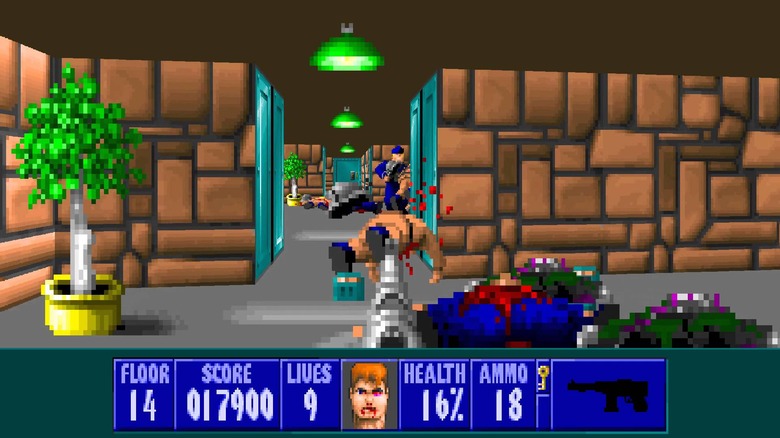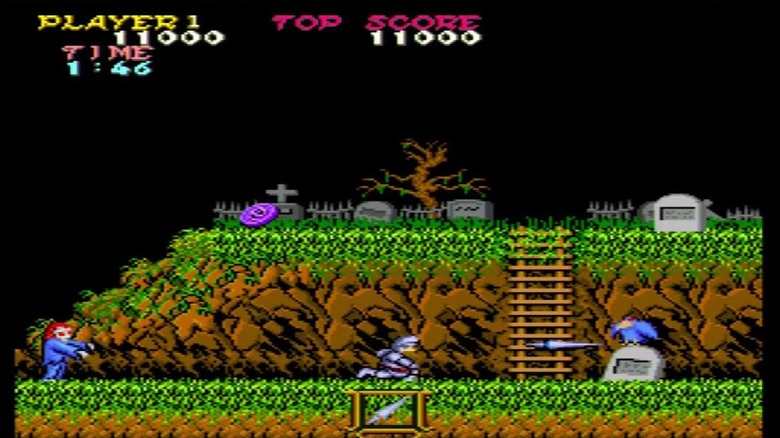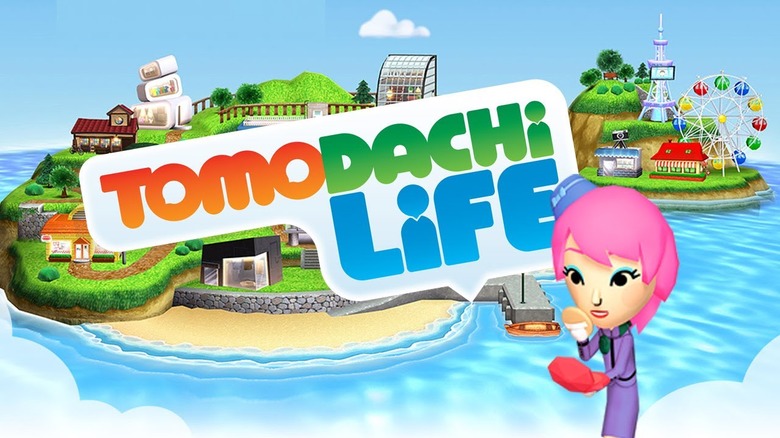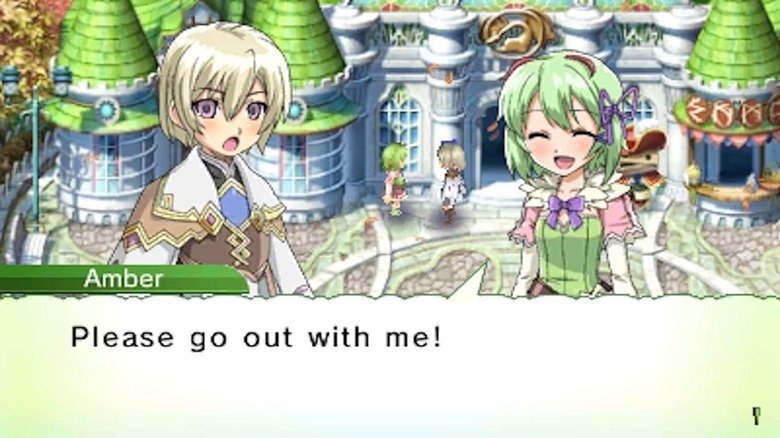Games You Didn't Realize Were Part Of A Series
Did you know that the television show Frasier is actually a spin-off of Cheers? Or that The Da Vinci Code was actually the second book in Dan Brown's series, not the first? There are instances where the origins of media can get lost in translation. It happens in TV. It happens in film. It happens with books. And it certainly happens in video games. Whether you're not picking up on the context to understand how one game ties into another, or you're lacking the knowledge of earlier works, it may come as a shock to you when you realize the game you're playing is actually part of a larger series.
We've assembled an entire list of games that fall into this category. By the end, you may be surprised to learn that some of your favorite titles weren't one-and-done releases, but instead were entries into already-established video game universes.
Here they are.
Captain Toad: Treasure Tracker
In various Super Mario games, Toad is that dependable friend who always has the items and power-ups you need to keep pushing on. But have you ever wondered where exactly Toad is getting this stuff? In Captain Toad: Treasure Tracker, we got our answer: he's actively out there searching for it, dodging all sorts of harm along the way.
But did you know that, in Treasure Tracker, Toad is actually gathering loot for an adventure you may or may not have already played as Mario? You may remember some Treasure Tracker-esque levels showing up in Super Mario 3D World on the Wii U, and as it turns out, Treasure Tracker — and presumably those interspersed levels in 3D World — are actually taking place before the events of Mario's adventure.
Captain Toad: Treasure Tracker is a Super Mario 3D World prequel. Who knew?
The next time you play as Mario, give thanks to your mushroom-headed pal for all the hard work he's doing on your behalf.
Super C
It's tough to think of the arcade and 8-bit era of games without bringing up Contra. It was one of the ultimate quarter-eaters, and an even bigger blast to play on the couch once it reached home consoles. And it's possible you played Contra's immediate sequel, though there's also a very solid chance you played the sequel and not the original, having no idea that the two games were tied together in any way, shape or form.
Why? Because Konami — the company behind the Contra series — decided to call its follow-up Super C. Not Super Contra. Just Super C. It's almost as though Google wasn't a thing to worry about back then.
Super C is indeed number 2 in the Contra series of games, which spans all the way from the 1987 original to its last release in 2011. If you're a fan of the game and you're just now learning where it fits in the grand scheme of the Contra universe, take solace in the fact that you're probably not alone.
Chocobo Racing
The late '90s were chock full of kart racing games. There's Mario Kart 64, which is likely the most well-known to gamers of that generation, along with Diddy Kong Racing, a more Rare-focused take on the genre. Crash Bandicoot even joined the party with Crash Team Racing.
But did you know that Squaresoft also got in on the act?
Yes, the company known in that decade for its plethora of RPGs put out Chocobo Racing, a 1999 title featuring adorable little creatures called Chocobos. Players could run, kart, or fly through a wide variety of tracks, using special power-ups to attack other racers and try to get an edge. It was a pretty standard take on the kart racing formula, and if you were unfamiliar with Squaresoft's other works, it might not have stood out all that much.
Here's the kicker, though: Chocobos are a creature found in the Final Fantasy franchise. And all of Chocobo Racing's tracks take place in some kind of Final Fantasy-based setting. The game is not a standalone racer, but is instead part of the larger Final Fantasy universe, right down to its magic meter for special attacks.
Pretty cool, right?
Hyrule Warriors
At first glance, Hyrule Warriors seems like the type of game you'd expect for a Legend of Zelda spin-off. It features Link, along with a whole host of other characters from the Zelda universe, swinging weapons around on an open battlefield against hordes of Hyrule's most notorious bad guys. The Zelda games are already known for their action combat, so this game isn't a huge departure from what the series already offers.
But if you look at the game's finer details, you may discover there's more to the story.
For instance, you might discover that Hyrule Warriors was not developed by Nintendo, but instead, by Koei Tecmo. And once you go down that rabbit hole, you'll discover a whole list of games that look and play exactly like Hyrule Warriors, but with different characters.
Once you've reached this point, you've reached the truth: Hyrule Warriors is as much a part of the Dynasty Warriors series as it is the Legend of Zelda universe.
Xenogears
When game critics talk about the greatest RPGs ever made, the original PlayStation's Xenogears often shows up as part of the conversation. It was brought into the world by Square in 1998, and it had the distinct honor of starting out first as the original premise for Final Fantasy VII and, later, the sequel to SNES classic Chrono Trigger. Eventually, though, it was allowed to become its own game, and in time, it achieved a devoted following that it still enjoys to this day.
But did you know that Xenogears was not the only game in the series? It may seem that way due to the first game's immense popularity. But there are other games that take place in that same world, and some of them have been released more recently than you may think.
All of the Xenosaga games, which include three mainline entries and a mobile title, are also part of the Xeno universe at large. And the Xenoblade Chronicles titles, which got their start on the Wii and appeared most recently on the Nintendo Switch, are also part of Xeno canon.
Simply put: if you see Xeno in the title of a game, there's a good chance it's a descendant of Xenogears.
Spear of Destiny
On its own, the very title of this game – Spear of Destiny — doesn't do much to fill you in on what it's about. Jump in and start playing, though, and you'll likely experience graphics and gameplay that both seem very familiar. That is, if you've played Wolfenstein 3D.
Spear of Destiny is no one-off video game. It's actually a prequel to Wolfenstein 3D, which makes it the very first mission taken up by main character B.J. Blazkowicz.
id Software, which previously made the Wolfenstein titles before the franchise was taken under the care of Bethesda, released Spear of Destiny shortly after its mainline Wolfenstein title in 1992. The game used many of the same assets that 3D used, which explains the similar look. However, it featured a whole new story, along with new enemies and bosses, giving Wolfenstein fans a second helping of the original's formula before they really had time to miss it.
You can find Spear of Destiny on both Steam and iOS if you're looking to give it a try.
Ghosts 'n Goblins
If you had the Nintendo Entertainment System — or knew someone with an NES growing up — there's a good chance you played Ghosts 'n Goblins. It was one of those titles that felt like a must-have, along with Super Mario Bros., and it's looked back on so fondly today that gamers might naturally believe it never received sequels. After all, Ghosts 'n Goblins was great, so it would have had some pretty awesome sequels, right?
Prepare to be surprised.
Ghosts 'n Goblins was, believe it or not, the opening salvo in a pretty lengthy series of games. After Ghosts 'n Goblins released in 1985, a sequel called Ghouls 'n Ghosts skipped the NES entirely, releasing on other platforms in 1988. The franchise returned to Nintendo in 1991 when Super Ghouls 'n Ghosts hit the SNES and other 16-bit platforms, and from there, things get confusing.
Four more games dropped in the mainline series between 1999 and 2010. A spin-off series called Gargoyle's Quest had three entries of its own from 1990 to 1994. And yet another spin-off series called Maximo lived exclusively on the PlayStation 2 between 2001 and 2003.
It seems Capcom got a little carried away.
Tomodachi Life
Those who took some time to play Tomodachi Life on the Nintendo 3DS found a weird, weird game. It sort of feels like a Sims title featuring your Mii character and other Miis you create, and in the game, you can shop for new outfits, encourage budding romances, engage in rap battles, and more. It's delightfully strange, and if you got as much of a kick out of the game as some critics, you might be wondering if we'll see a new Tomodachi Life game in the future.
But what if we told you that Tomodachi Life isn't the first of its kind? What if we told you that, actually, Life isn't even the first game in the series? Well, we're telling you: it's not.
All the way back in 2009, Japan received an exclusive title on the Nintendo DS called Tomodachi Collection. That game set the stage for what Life would ultimately expand on by putting Miis at the forefront of the experience, letting players complete jobs and purchase items to level up and progress in the game. If you understand Japanese and you want more Tomodachi in your life, consider picking it up!
The Rune Factory series
The Rune Factory series first arrived on the Nintendo DS back in 2006 and, since then, has seen five sequels and off-shoot titles released across a number of different platforms. The game's premise is simple: farming creates the income needed to purchase items, and farmed resources can also create items players need to progress. There are other aspects of the game, including some dungeon crawling and battles, but farming is central to the experience.
It sounds sort of like another game series we've played: Harvest Moon. And as it turns out, there's a reason for that.
Rune Factory is a Harvest Moon spin-off series.
The producer behind the Harvest Moon franchise, Yoshifumi Hashimoto, has said in the past that Rune Factory is "Harvest Moon where you wield a sword." And in terms of game mechanics, that's a pretty apt description. Time in Rune Factory passes just like it does in Harvest Moon: one second in the real world equals one minute in the game. And farm equipment can be upgraded in Rune Factory, just as it can in the series it spun off from.
The next time you play Rune Factory, try to pick out the similarities between the two. There are more than you might have noticed at first.

